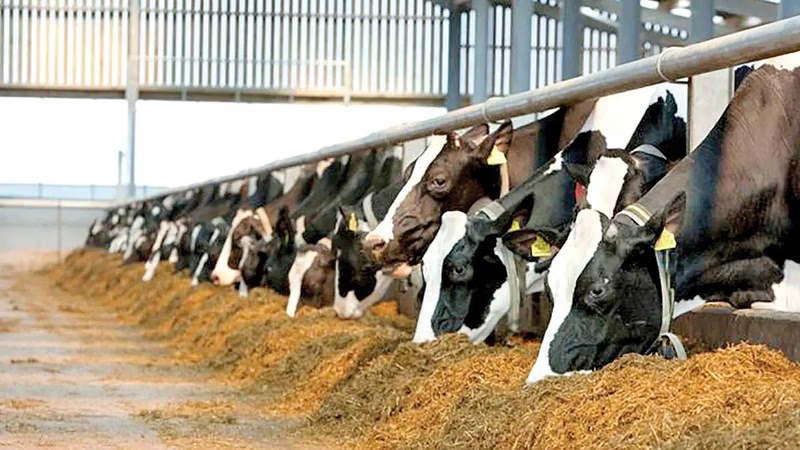
Explore economical fodder options for animal feed in trade.
Fodder is an important part of livestock nutrition, and their price and economy are important for livestock farmers. The economic viability of fodder depends on several factors, including geographical area, distribution of products and transportation costs, the cost of feed and the nutritional needs of livestock. Livestock feeding should be balanced and according to their needs, and it is recommended to use a suitable combination of fodder and different foods .
Alfalfa is known as one of the valuable fodder for livestock and poultry. Countries like America, Canada, Australia and France are among the biggest exporters of hay to the world market. Corn is one of the valuable agricultural products that is used as animal and poultry feed. America, Brazil, Argentina and Ukraine are among the world's largest corn exporters. Wheat straw and stalks, which are used as economic fodder , can be considered as export products. Countries such as America, Russia, Canada and Ukraine are among the exporters of wheat straw and stems to the world market. Rice bran and husk, which are used as cheap fodder for livestock and poultry, may be considered as export products if the production is high.
Livestock feeding should be balanced and according to their needs. Using a suitable combination of fodder and different foods can help meet the nutritional needs of livestock and also have an economic advantage. Coordination between geographic area, distribution of products, transportation costs, cost of feed and nutritional needs of livestock can have a significant impact on the economics of forages for ranchers. The amount of export and the value of each of these forages depends on factors such as production, quality, price, demand in the world market and competition with other countries. Types of economic fodder that are used for animal feed are:
- Alfalfa is one of the common and expensive fodder that is used as a source of protein and energy for livestock. Due to its ability to fix nitrogen from the air, alfalfa can reduce the need for nitrogen fertilizer and reduce production costs.
- Corn is used as a cheap source of energy and carbohydrates for livestock. This vegetable product has a reasonable price and can be part of economic fodder for livestock.
- Wheat straw and stalks are the waste that remains after harvesting the main crop. These materials can be used in the production of animal feed and are used as economic fodder for animals.
- Rice bran and husk, which are produced as wastes from the rice industry, can be used as a cheap source of energy and fiber for animal feed.
- Purslane is another economic fodder that is used as a cheap source of protein and energy for livestock.
A set of different materials can be used for livestock and poultry feed. Cereals such as barley, wheat, corn and sorghum are very important in feeding livestock and poultry and act as the main source of energy for them. Oilseeds such as soybean, canola, and sunflower are commonly used as protein sources for livestock and poultry feed. Materials such as molasses, rice husks and flours, sunflower kernel husks and agricultural waste (such as straw and wheat stalks) can be used in the preparation of animal and poultry feed. All kinds of protein materials such as meat powder, fish powder, ring flour powder and rice flour are used in feeding livestock and poultry. Leaves, stems, and various vegetables such as alfalfa, purslane, and fodder corn are used as fodder for livestock and poultry. Nutritional substances such as vitamins, calcium, phosphorus, etc. are also used as supplements in livestock and poultry feed to meet their nutritional needs.
Climate and soil conditions in each region can have a great impact on the production and price of fodder. Areas with suitable climate and fertile soil may produce more fodder and have a good price. The costs of transporting fodder from the place of production to the consumption markets can also have a significant effect on the final price. The distance and similarity of the needs of consumer markets can also play a role in the distribution of fodder and its price. The finished price of animal feed, which includes the costs of producing and preparing fodder and other food items, can have a great impact on the economics of fodder. If the cost of feed for livestock farmers is high, the use of economical and valuable fodder can be considered.



